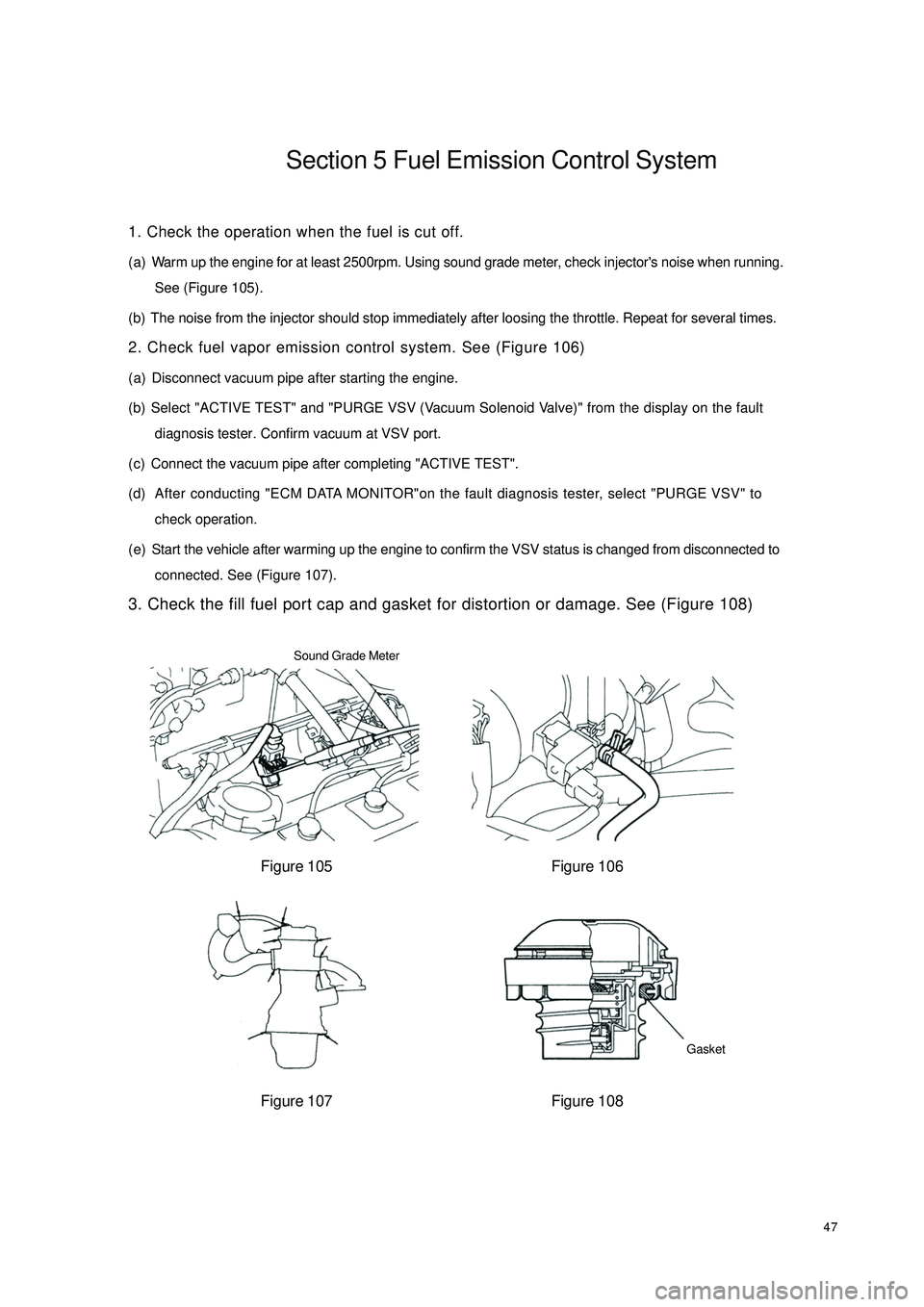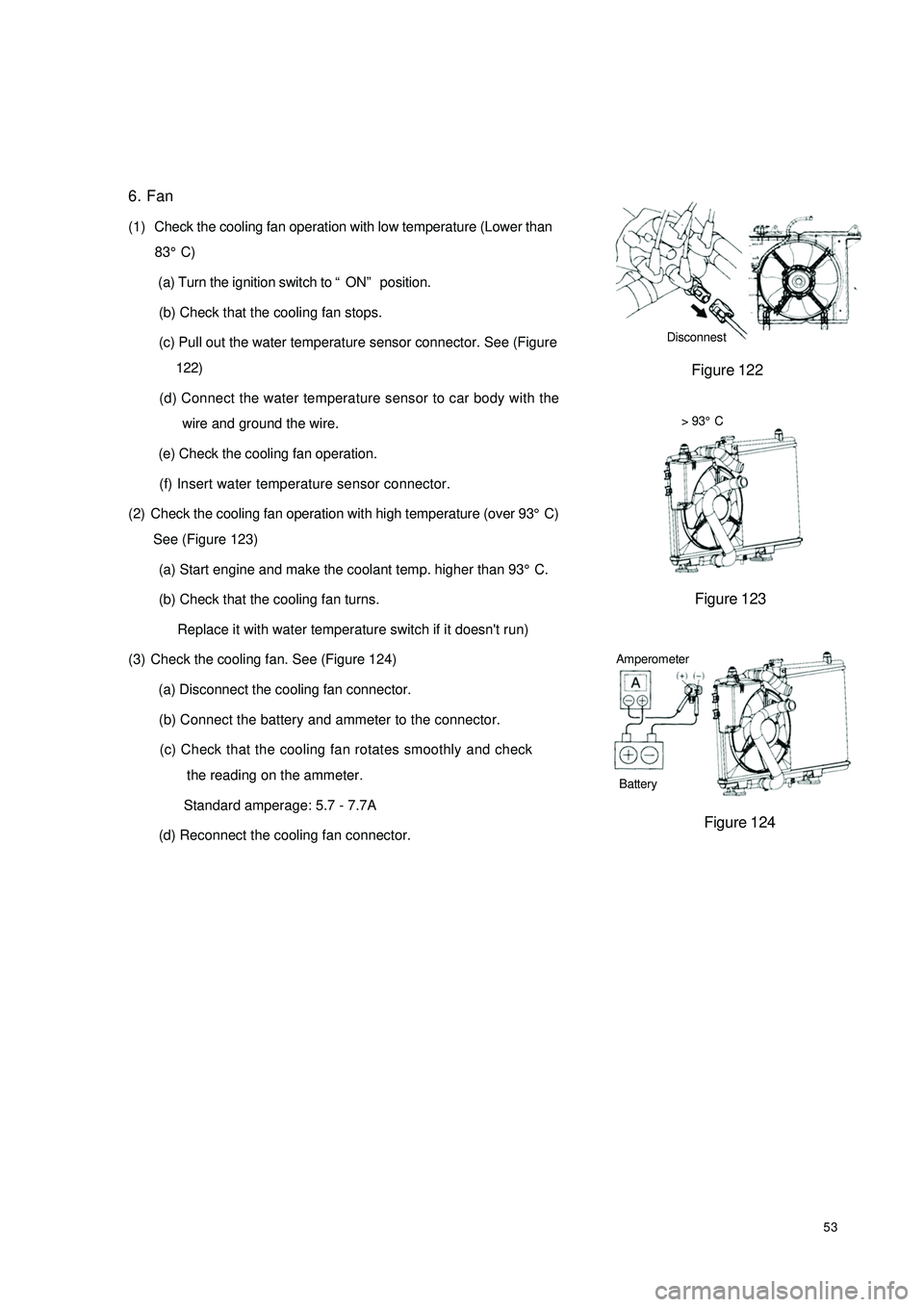2008 GEELY CK stop start
[x] Cancel search: stop startPage 5 of 392

Section 8 Parking Brake System..................................................................................... 155........................................................157Chapter 1 Survey................................................................................................157
Chapter 2 Starting and Charging System.........................................................161Section 1 Starting System (MR479Q MR479QA MR481QA)..........................................161
Section 2 Charging System (MR479Q, MR479QA, MR481QA).......................................164Chapter 3 Combination Meter System..............................................................171Section 1 Circuit Diagram of Combination Meter and Location of Multi-pin Plug-in
Terminal............................................................................................................................ 171
Section 2 Malfunction Symptom Table and Solution Procedure...........................................174
Section 3 Combination Meter.......................................................................................... 187Chapter 4 Wiper and Washer System...............................................................193Section 1 Wiper and Washer System Inspection............................................................ 193
Section 2 Replacement and Adjustment............................................................................196Chapter 5 Light System......................................................................................198Section 1 Survey of Light System......................................................................................198
Section 2 Light System Symptom Inspection.................................................................. 202
Section 3 Headlamp Replacement....................................................................................211
Section 4 Front Fog Lamp Replacement............................................................................215
Section 5 Rear Combination Lamp Replacement..............................................................217
Section 6 High Mounted Stop Lamp Replacement............................................................218
Section 7 Interior Dome Lamp Replacement.....................................................................219
Section 8 Rear Row Reading Lamp Replacement...........................................................220
Section 9 License Plate Lamp Replacement...................................................................220Chapter 6 Audio System......................................................................................221Section 1 Audio System Description.................................................................................221
Section 2 Audio System Connector Terminal Layout...........................................................224
Section 3 Audio System Inspection................................................................................. 225
Section 4 Audio and Video System Replacement........................................................... 238Chapter 7 SRS (Supplemental Restraint System).............................................242Section 1 SRS-General Information.................................................................................242
Section 2 Troubleshooting................................................................................................ 251Part III Electrical Equipment
Page 42 of 392

35Chapter 3 Lubrication System
(MR479Q, MR479QA, MR481QA)Section 1 Oil Pressure Gage Sensor Replacement1. Check oil level
Warm up the engine. Check the dipstick to ensure oil level between "L" and "F" after engine stopped
5 minutes. Check for leakage if it is too low. Fill oil to "F.
2. Check oil for deterioration. Water entry, discolor and dilution. Replace oil if it is obviously
deteriorated.
3. Detach oil pressure sensor assembly. See (Figure 80)
4. Install oil pressure gage sensor. See (Figure 81) Start engine to
normal operation temperature.
5. Check for oil pressure
6. Smear adhesive on 2 or 3 threads of the oil pressure sensor.
Install oil pressure sensor. See (Figure 82)
Figure 81
Figure 82Figure 80
Page 48 of 392

41Chapter 4 Fuel System
(MR7131A, MR7151A, MR7161A)Section 1 Check Fuel System Pressure1. Remove the fuel tank from the vehicle
2. Check the fuel pump running
(a) Connect the positive and negative battery terminal to the concerned
fuel pump connector. See (Figure 91).
Notice: Do not start engine
The sound of fuel flowing can be heard if there is pressure.
Check fusible link, fuse, EFI open circuit relay, fuel pump, ECU and
wire connector if there is no pressure.
(b) Turn the ignition switch to "OFF" position.
3. Check fuel pressure
(a) Check battery electrical pressure to be above 12V.
(b) Detach negative terminal cable from the battery.
(c) Install pressure gage from the fuel delivery pipe. See (Figure 92).
(d) Connect battery negative terminal.
(e) Measure fuel pressure
Fuel pressure:
304-343kPa
Check fuel pipe & union, fuel pump, fuel filter if the pressure is too
low.
(f) Start engine. Measure fuel pressure at idle. Fuel pressure: 304-343kPa
(g) Check fuel pressure and retain the pressure for approximately 5min after the engine stopped.
Fuel pressure: 147kPaFigure 91Figure 92
Page 54 of 392

47Section 5 Fuel Emission Control System1. Check the operation when the fuel is cut off.
(a) Warm up the engine for at least 2500rpm. Using sound grade meter, check injector's noise when running.
See (Figure 105).
(b) The noise from the injector should stop immediately after loosing the throttle. Repeat for several times.
2. Check fuel vapor emission control system. See (Figure 106)
(a) Disconnect vacuum pipe after starting the engine.
(b) Select "ACTIVE TEST" and "PURGE VSV (Vacuum Solenoid Valve)" from the display on the fault
diagnosis tester. Confirm vacuum at VSV port.
(c) Connect the vacuum pipe after completing "ACTIVE TEST".
(d) After conducting "ECM DATA MONITOR"on the fault diagnosis tester, select "PURGE VSV" to
check operation.
(e) Start the vehicle after warming up the engine to confirm the VSV status is changed from disconnected to
connected. See (Figure 107).
3. Check the fill fuel port cap and gasket for distortion or damage. See (Figure 108)
Figure 105 Figure 106
Figure 107 Figure 108Sound Grade Meter
Gasket
Page 60 of 392

536. Fan
(1) Check the cooling fan operation with low temperature (Lower than
83°C)
(a) Turn the ignition switch to “ON” position.
(b) Check that the cooling fan stops.
(c) Pull out the water temperature sensor connector. See (Figure
122)
(d) Connect the water temperature sensor to car body with the
wire and ground the wire.
(e) Check the cooling fan operation.
(f) Insert water temperature sensor connector.> 93°C
See (Figure 123)
(a) Start engine and make the coolant temp. higher than 93°C.
(b) Check that the cooling fan turns.
Replace it with water temperature switch if it doesn't run)
(3) Check the cooling fan. See (Figure 124)
(a) Disconnect the cooling fan connector.
(b) Connect the battery and ammeter to the connector.
(c) Check that the cooling fan rotates smoothly and check
the reading on the ammeter.
Standard amperage: 5.7 - 7.7A
(d) Reconnect the cooling fan connector.Disconnest
Figure 123
Figure 124 Figure 122
(2) Check the cooling fan operation with high temperature (over 93°C)Battery Amperometer
Page 141 of 392

134On-vehicle inspection1. check the drive belt
Observe the drive belt for excessive wear and cordline wear. Replace the drive belt if necessary.
Hint: Cracks on the rib side of a belt are considered acceptable. If missing chunks from the
ribs are found on the drive belt, it should be replaced.
2. Bleed the power steering system
(1) Check the fluid level
(2) Jack up the front of the vehicle and make sure it is safe
(3) Rotate the steering wheel
a. With the engine off, turn the steering wheel from LH limit position to RH limit position several
times
(4) Release the jack and lower the vehicle
(5) Start the engine, run the engine at idle for a few minutes
(6) Turn the steering wheel to left or right limit position and keep it there for 2 - 3 seconds, then turn the
steering wheel to the opposite limit position and keep it there for 2 - 3 seconds. Repeat it several
times.
(7) Shut off the engine, check for foaming or emulsification in the reservoir. If there is foaming or
emulsification, bleed power steering system repeatedly
(8) Check the fluid level and for leakage
2. Check the fluid level
(1) Park the vehicle on a level surface
(2) With the engine stopped, check the fluid level in the reservoir. Add power steering fluid AT F
DEXRON if necessary.
Hint: the fluid level should be within the range of lowest level and highest level
(3) Check for foaming or emulsification, if there is, drain the power steering systemNormalAbnormal
Page 150 of 392

143Section 4 Vacuum Booster with Brake Master Cylinder AssemblyNotice: The vacuum booster with brake master cylinder assembly must be repaired by
manufacturer. Replace it if it is faulty.On-vehicle inspection1. Check vacuum booster
(a) Air tightness check
(1) start the engine, run 1 or 2 minutes then shut off. Depress the brake pedal several times slightly.
Hint: if the pedal rises gradually after depressing the pedal, the booster is airtight.
(2) Depress the brake pedal while the engine is running, and stop the engine with the pedal depressed.
Hint: if there is no change in the pedal reserve stroke after holding the pedal for 30 seconds,
the booster is air--tight.
(b) Operating check
Depress the brake pedal and start the engine. If the pedal goes down slightly, operation is normal.
2. Check the vacuum check valve
(1) Remove the connecting pipe with the check valve
(2) Check the direction from the booster to the engine. Check valve for ventilation. It should not
ventilate in the reverse order.
(3) Replace it if it is faulty.
Notice: Pay attention to the matchmark on the connecting hose when connecting
the hose with vacuum check valve. Do not install it in reverse order.Replacement1. Remove the brake pipe on the brake master cylinder (master cylinder)
2. Refer to Brake Pedal Replacement for other operation
Notice:
(1) The torque of the union thread on the brake master cylinder (master cylinder )
and brake pipe: 12-16 N.m
(2) Bleed all the air in the brake system after installationGoodPoorThird
Second
First
Page 202 of 392

195Front washer switch
If no continuity, replace the switch.
(b) Operation inspection (washer switch)
1Turn the washer switch on the position OFF.
2Connect the connector terminal 8 to the battery positive (+)
and the terminal 2 of wiper connector to the negative (-). Turn
the washer switch ON and OFF and then measure the battery
voltage between the terminal 8 and terminal 2 of the wiper
motor connector.
Standard: as shown on the left
If it is not as specified, replace the switch.
3. WIPER MOTOR ASSEMBLY
(a) Inspect the low speed shift
�yConnect the connector terminal 3 to the battery positive
(+) and the connector terminal 2 (E) to the negative
(-), check that the motor operates at low speed.
If it is not as specified, replace the motor.
(b) Inspect the high speed shift
�yConnect the connector terminal 3 to the battery positive
(+) and the connector terminal 2 (E) to the negative
(-), check that the motor operates at high speed.
If it is not as specified, replace the motor.
(c) Inspect automatic return
1Connect the connector terminal 5 to the battery positive (+) and the connector terminal 2 (E) to the
negative (-). Let the motor operates at low speed, disconnect terminal 5 (+) to make the motor stop at a
random position.
2Connect the terminal 5 and terminal 3, and connect the terminal 4 to the battery positive (+), make the
motor restart at low speed.
3Check that the automatic return operates in a normal way.
If it is not as specified, replace the motor.Switc h position Te ste d termina l Spe c ifie d c onditionOFFNo c ontinuity
ON 8(+)—7(-)Continuity